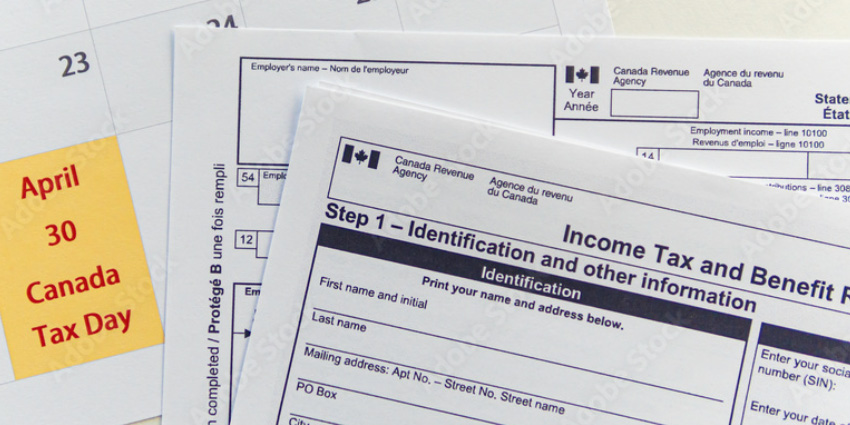Empathy statements help customer service agents convey that they understand an issue and are on the customer’s side.
Some people are naturally good at this. They can put themselves in the customer’s shoes, imagine how they are feeling, and speak to that.
However, on their 50th call of the day, even the best agents refer back to scripted statements to ensure they continue showing empathy.
After all, these agents know that – when they don’t show empathy – customers often become angrier and repeat the issue over and over again until they feel heard.
As such, having a bank of empathy statements – and knowing when to use those phrases – is critical for any customer service team.
With that in mind, here are 23 examples of empathy statements for every customer service situation.
1. “I’m here to listen and support you.”
Customers often feel like they’re alone in overcoming their issues, fueling feelings of anxiety and anger. With this statement, agents may help customers feel safe, relieving them of those negative emotions.
For instance, consider a scenario where the customer is anxious and struggling to spell out their issue. Here, this phrase can help them reset, become more comfortable, and more clearly articulate the problem at hand.
2. “That’s terrible” / “How awful.”
As customers talk, agents often use verbal nods like “yes” or “uh-huh” to show they’re listening attentively.
When they’re outlining a particularly painstaking issue, agents can instead use “that’s terrible” or “how awful” to the same effect.
In doing so, the agent may also demonstrate that they’re putting themselves in the customer’s shoes.
3. “I do understand your point.”
Customers can often double down on points somewhat irrelevant to the case or its outcome. Using this empathy statement, an agent can reassure the customer they’ve understood them.
Additionally, it’s helpful as a neutral, non-inflammatory phrase that helps the agent acknowledge the customer’s perspective and veer away from a possible disagreement.
4. “You’re absolutely correct.”
Like the previous phrase, this statement – when said sincerely – often helps to de-escalate a difficult customer conversation.
The word “absolutely” also helps to emphasize that the customer is correct, giving the agent a better chance of pushing the conversation forward.
5. “I realize that this must be frustrating for you.”
While this empathy statement is simple, genuine, and effective, it’s easy to use the word “understand” instead of “realize”. However, this can be a mistake.
After all, agents may trigger customers by suggesting they “understand” how they feel.
As such, while this statement may be a straightforward fallback option for common customer queries, use it cautiously.
6. “This is obviously a difficult time for you.”
Sometimes, customers can blow issues out of proportion. Yet, this may signal that they’re struggling with other things in their lives and misdirecting their frustrations.
In these situations, this empathy statement can help the agent recognize the broader problem. From there, they can narrow the focus to the matter at hand.
7. “This is a situation I’m desperate to resolve.”
With this statement, agents can demonstrate that they are on the customer’s side and want to find a resolution as fast as possible.
Moreover, it may help cool down a venting, impatient customer who seems doubtful about a quick, painless relationship.
8. “I’m disappointed that we didn’t…”
Here, the agent is sharing the customer’s disappointment, demonstrating how – in a small way – the matter has upset them, too.
Yet, perhaps more strikingly, the statement uses the word “we”. As such, the agent takes ownership of the problem, which is powerful in rebuilding the customer relationship.
9. “If I were in your position, I’d feel the same way.”
Some agents are wary of using this empathy statement, worried they may undermine the company. Yet, with the right tone, it can work well as it helps validate the customer.
Additionally, it allows the agent to show the customer they are considering what it’s like to be in their position, bringing empathy to life.
10. “I can see that you’re navigating a very tricky situation.”
When using this phrase, the agent becomes a witness to the problem. That signals to the customer that they are no longer alone in their bad experience.
As such, the agent creates a sense of safety and helps to regulate the customer’s emotions.
11. “I recognize that we’re in a rush to get this all sorted.”
Impatient customers are often the most tricky to deal with. They don’t explain their issues clearly, rush the agent, and – typically – slow the conversation.
With this empathy statement, the agent can reset the conversation, recognize the need for a speedy resolution, and – again through the use of “we” – convey they’re on the customer’s team.
12. “I can tell you’re upset. So, I want to just take a minute to explain what has happened and answer all of your questions.”
In a flurry, customers will often repeatedly interrupt an agent as they’re trying to offer support. Staying calm in these situations isn’t easy.
Yet, consider why the customer keeps interjecting. It’s likely because they don’t feel heard.
With this statement, the agent can reassure the customer that they will have the chance to say their piece while creating the space to move the interaction forward.
13. “I hate to think that now you won’t be able to…”
Sometimes, a customer may state how an issue has impacted them. For instance, perhaps a late delivery means they’ll have no gift to share with a family member or friend on their birthday.
If an agent can reflect on such a scenario and empathize with this statement, they can acknowledge the issue’s impact and demonstrate real compassion.
14. “I’m sorry you’ve had to deal with all that.”
Customer issues can be multi-faceted, with a lot to consider. A simple, conversational empathy statement like this is ideal in such cases.
After all, this statement includes both an apology and an acknowledgment of the problem, while it doesn’t downplay its size.
15. “I’ve been where you are now as a customer. I understand how difficult these situations can be.”
Relating personally to a customer’s problem helps show genuine empathy. That can be powerful.
Also, it enables the agent to emphasize that they are listening to the customer and are actively putting themselves in the customer’s shoes.
16. “You don’t need to worry at all. I will…”
Anxious customers need reassurance. When the agent is confident in finding a resolution, this empathy statement can help put their mind at ease.
Indeed, it helps the agent foreground the solution, so the customer gets a big boost of relief and remains calm for the rest of the interaction.
17. “I can’t think of what to say to make up for the experience you’ve had.”
Sometimes, agents just can’t think of what to say. In these scenarios, this phrase is excellent as it’s transparent and genuine.
Moreover, it emphasizes how the scope of the issue is not lost on the agent, which is again helpful when dealing with irate customers.
18. “This was an unacceptable mistake, and that’s on us.”
Agents shouldn’t feel scared to own specific issues outright. Sure, it may not be their fault, but only by someone taking ownership can the contact center begin to repair the relationship.
Of course, sometimes the customer may be at fault. Yet, when it’s a problem the company created – with clear negative consequences – this statement can aid the customer service recovery.
19. “You deserved much more; we let you down.”
Again, this statement allows the agent to take responsibility while empathizing with the customer’s situation.
Such a phrase is particularly good when the agent recognizes that this is a loyal customer. Acknowledging and showing appreciation for their repeated business is critical to winning back their trust.
20. “I’m sorry you’ve had to call in so often. I’ll do my best to find a solution this time around.”
Sometimes, a customer will say they’ve had to contact the business multiple times regarding their issue. Other times, the agent may recognize that in the CRM.
Either way, this empathy statement acknowledges their struggle and aims to start this conversation on a more positive note.
21. “I’m really sorry for the long wait. I appreciate your patience.”
Contact center wait times keep getting longer. While this is typically a workforce planning issue, the agent can own the inconvenience and immediately offer empathy.
In doing so, the agent positions themselves as the customer’s trusty confidant at the start of the interaction and sets the stage for an open, frank, loyalty-building conversation.
22. “You were right to bring this to our attention.”
Customers often seem uncertain when they contact the contact center. Was there actually the need to call up customer care? Did I miss a vital piece of information?
Using this empathy statement, an agent can validate their decision, giving them that sense of emotional security.
23. “I’m on your team.”
In itself, this is not an empathy statement. However, paired with another apology or acknowledgment of a problem, this phrase promotes cooperation between the customer and agent.
Best Practices for Showing Empathy In Customer Service
A bank of empathy statements offers customer service agents something to fall back on. However, a contact center will hope it eventually becomes second nature for most agents to show empathy.
To help speed this along, service leaders can coach in the following best practices.
Use Verbal Nods to Show You’re Listening
Customers will often pause when explaining their issues. By using verbal nods – like “yes” and “uh-huh” – the agent shows that they are listening and encourages the customer to keep talking.
When they pause while outlining a difficult situation, agents may interject by stating “how terrible” or words to that effect. In doing so, they can offer “live empathy”.
Clarify the Situation to Demonstrate an Understanding
Often, an agent may jump to an empathy statement without truly understanding the issue. When the customer senses this, it breaks rapport and trust.
As such, an agent should first reflect on the customer’s problem to demonstrate their comprehension. From there, they can acknowledge its impact and show real empathy.
Acknowledge, Empathize, and Reassure
An excellent service handling technique is to first acknowledge the issue, then empathize with the customer, and offer reassurance. The following sentence does all this:
I’m sorry that you’re having to take more time out of your day to contact us again about this. I realize how frustrating that is when you’re busy. My goal is to make sure we find a solution this time around.
Discover more about the acknowledge, empathize, and reassure strategy here.
Pivot to the Solution Quickly
After the agent has shown empathy, calmed the customer down, and offered reassurance, they shouldn’t dwell on the problem. Instead, pivot to the positive: the prospect of a resolution.
To help agents make that pivot, statements like: “What I’m going to do to resolve the situation is…” and “Let’s see how we can solve this” can help move the conversation along and create that vital sense of urgency.
Create a Sense of Cooperation
By using empathy statements, customer service agents can convey to the customer that they’re on their side. Try to maintain this sense of cooperation for the rest of the interaction.
An excellent technique here is for agents to use the word “we” when referring to themselves and the customer – emphasizing that they’re not alone in handling the issue.
Additionally, this tactic helps the customer feel like they have someone on the “inside” of the business doing their best for them. That’s huge for relationship building.
5 Empathy Statements for Customer Service to Avoid
While the earlier empathy statements offer excellent guidance, other phrases risk irritating customers and making a difficult conversation worse. Here are five such examples.
1. “I’m sorry you feel that way.”
This statement risks poking the hornet’s nest, as it’s a non-apology, inferring that the customer isn’t justified in feeling how they do.
“I’m sorry that we made you feel that way” is an improvement.
Better still, if the customer expresses that they are “upset” – for example – build that into the empathy statement instead.
For instance, the agent could say: “I’m sorry that we upset you.”
Again, this shows that the agent is listening and in lock-step with the customer.
2. “I understand how you feel.”
This statement could work well if the agent shares a personal example of when they felt similarly to the customer. Yet, on its own, this phrase may bother the customer. They’ll think: how could you know exactly how I feel?
It’s also generic, which may place more doubt in the customer’s mind.
3. “Calm down.”
Nobody likes being told what to do. That’s why, in the history of humankind (probably), the phrase “calm down” has never had the desired effect.
In situations where customers already feel out of control and vulnerable, this phrase becomes even more inflammatory.
4. “I’m trying to help you.”
Agents may let this phrase slip in a desperate attempt to handle a rude, interrupting customer.
However, this can put the customer’s back further up against the wall, and they’ll likely try to justify their anger until they finally feel the agent has heard all their troubles.
Instead, it’s better for the agent to acknowledge the customer’s feelings and ask for permission to say their piece.
5. “I’m sorry, but there’s nothing I can do.”
While an agent may not be able to find a solution, there’s always something they can do.
Whether requesting compensation from a supervisor or demanding a change of process so such incidents never happen again, agents can show empathy for the customer by trying to find a creative solution.
As they do so, the customer may at least appreciate their attempts and – through the agent – see the company in a new light.
Can technology help agents show empathy? Find out by reading CX Today’s article: 20 Excellent Use Cases for a Contact Center Virtual Assistant







